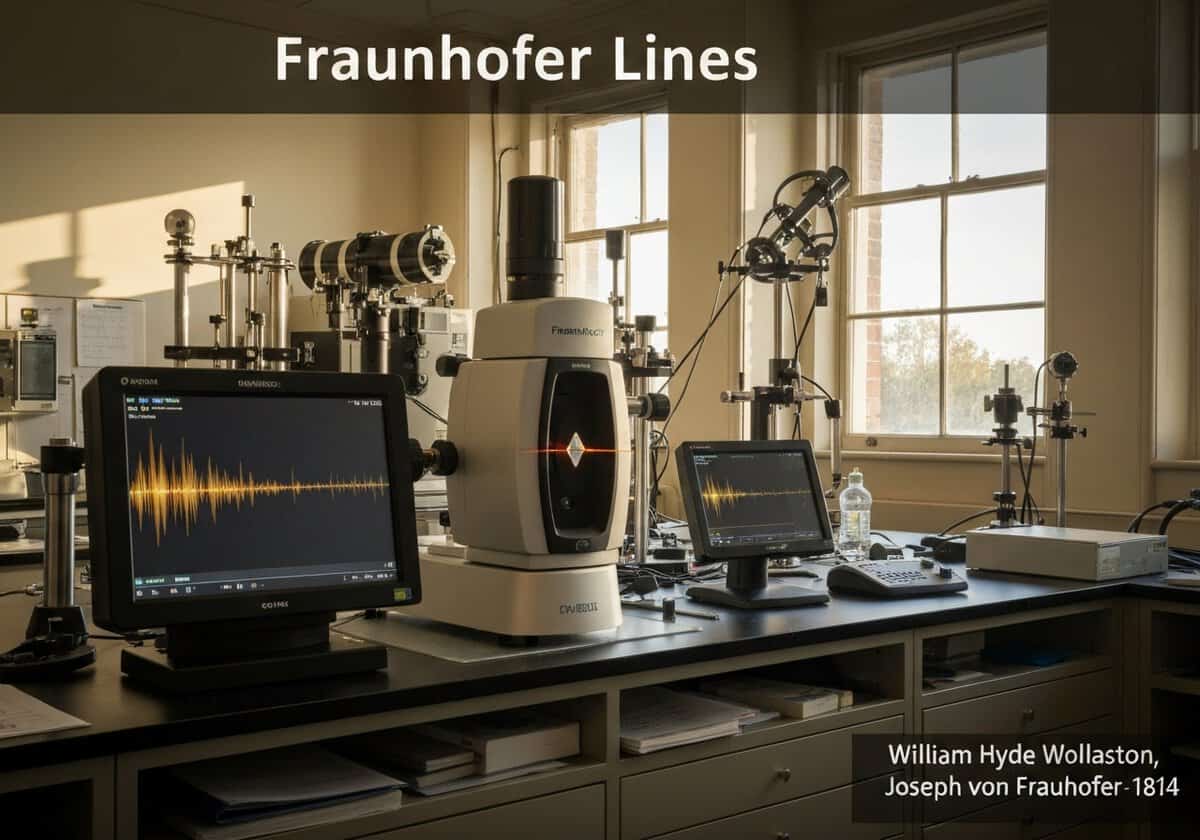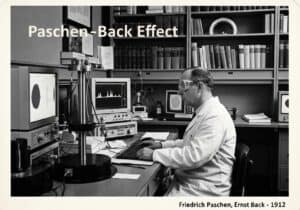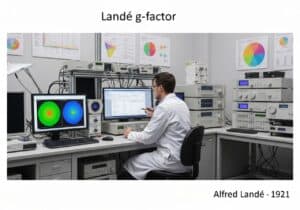Fraunhofer lines are a set of dark absorption lines in the optical spectrum of the Sun. They are the result of specific wavelengths of light from the Sun’s hot interior being absorbed by cooler atoms and ions in its photosphere. Each line corresponds to a particular electron transition in a specific element, allowing for the determination of the Sun’s chemical composition from Earth.
In 1802, William Hyde Wollaston first noted the existence of dark lines in the solar spectrum. However, it was Joseph von Fraunhofer who, in 1814, independently rediscovered and systematically studied these lines using a high-quality prism and telescope, mapping over 570 of them. He labeled the most prominent lines with letters from A to K, a notation still used today. The profound significance of these lines was not understood until 1859, when Gustav Kirchhoff and Robert Bunsen established that the pattern of lines was unique to each chemical element. They realized that the dark lines in the solar spectrum matched the bright emission lines of known elements when heated. This 引领 to the groundbreaking conclusion that the Fraunhofer lines are absorption spectra. Light from the Sun’s continuous spectrum, produced by its hot, dense core (photosphere), passes through the cooler, less dense outer layers (chromosphere). Atoms in the chromosphere absorb photons at the precise frequencies corresponding to their allowed electronic transitions, re-emitting them in random directions. This process effectively removes those specific frequencies from the light reaching Earth, creating the dark lines. This discovery transformed astronomy from a science of position and motion to one of astrophysics, enabling the study of the physical nature and chemical makeup of distant stars.
UNESCO Nomenclature: 2101
– Astronomy
前体
- Isaac Newton’s work on light dispersion (1672)
- 分光镜的发展
- 原子理论认为物质由离散元素组成
应用
- discovery of helium in the sun’s spectrum before it was found on earth
- 测定恒星和其他天体的化学成分
- 通过多普勒频移测量恒星径向速度
- 研究恒星大气和温度
Related to: Fraunhofer lines, absorption spectrum, solar spectrum, stellar composition, astrophysics, Kirchhoff, Bunsen, photosphere, chromosphere, spectral analysis.

















